Owen K.C. Stephens's Blog, page 25
May 10, 2022
Revised Magister for PF1 (Part 2)
Okay, still working on the Revised Magister, for PF1. Here comes one of the big reworkings — rules for how to select spells given that you can draw from one of three possible combinations of sources of magic (arcane/divine, arcane/occult*, or divine/occult).
*And yes, I know it’s “psychic” magic in PF1. But it’s used by occult classes, from Pathfinder Occult Adventures, and it became Occult Magic in PF2, so I just think of it as occult magic. If I release this as an actual product, I’ll go back and fix it. 
A magister casts spells from any two of the following sources of magic: arcane, divine, and occult. They can learn and cast spells from any class spell list that draws from the same type of magic as either of the two they have selected. Thus, an arcane/divine magister can draw spells from all arcane and divine class spellcasting lists; an arcane/occult magister can draw spells from all arcane and occult class spellcasting lists; a divine/occult magister can draw spells from all divine and occult class spellcasting lists. For more details on this, see “Choosing Spells,” below).
When deciding her two sources of magic, the magister also must choose two ability scores, one as her primary spellcasting ability, and the other as her secondary spellcasting ability. These cannot be the same ability score. The possible abilities that can be selected to be primary and secondary spellcasting abilities are Intelligence, Wisdom, and Charisma.
A magister can cast any spell she knows without preparing it ahead of time. To learn or cast a spell, a magister must have a primary spellcasting ability score equal to at least 10 + the spell level. The Difficulty Class for a saving throw against a magister’s spell is 10 + the spell level + the magister’s secondary spellcasting ability score modifier. Like other spellcasters, a magister can cast only a certain number of spells of each spell level per day. Her base daily spell allotment is given on “Table 1: The Magister.”
In addition, she receives bonus spells per day if she has a high primary ability score.
A magister need not prepare her spells in advance. She can cast any spell she knows at any time, assuming she has not yet used up her allotment of spells per day for the spell’s level. The magister’s potential range of spells is extremely broad, but she may only know a limited total number of spells. A magister begins play knowing four 0-level spells and two 1st-level spells of the magister’ choice (see “Choosing Spells”, below). At each new magister level, she gains one or more new spells, as indicated on “Table 2: Magister Spells Known.”
Upon reaching 3rd level, and at every other magister level after that (5th, 7th, and so on), a magister can choose to learn a new spell in place of one she already knows. In effect, the magister “loses” the old spell in exchange for the new one. The new spell’s effective level (see “Choosing Spells”, below) must be the same as that of the spell being exchanged, and it must be at least one level lower than the highest-level class spell the magister can cast. A magister may swap only a single spell at any given level and must choose whether or not to swap the spell at the same time that she gains new spells known for the level. A magister applies metamagic feats to her spells as if she were a sorcerer (unless she has metamagic points—see the metamagic pool mystic bond, below).
A magister who has selected occult magic as one of her two sources of magic casts spells drawn from occult spell lists using occult components (emotion and thought rather than somatic and verbal). For purposes of prerequisites and magic effects, a magister can choose to be treated as a spellcaster of either of the two types of spellcaster she has selected, but cannot count as both at the same time. For example, while both a cleric 3/magister 4 and a magister 4/wizard 3 qualify for the mystic theurge prestige class, a magister 7/sorcerer 1 does not. (In no case should a GM allow things clearly designed for multiclass arcane/divine spellcasters to apply to a single-class magister character in a disruptive or unbalancing manner.)
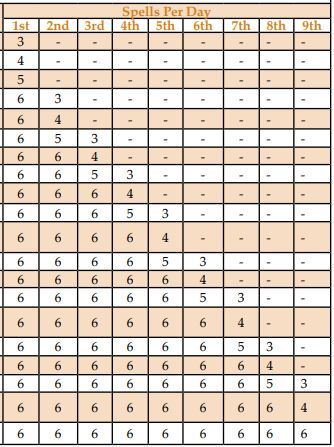 Choosing Spells
Choosing SpellsChoosing spells is a more complex process for the magister than for other spellcasting classes. To begin with, there is no set “magister spell list.” As a practitioner of two of the three sources of magic (arcane, divine, and occult), a magister will be able to choose spells from the list of any base class that draws spells from one of the two sources she has selected (though not spells available only to prestige classes). However, a magister’s choices begin with her primary spell list.
Primary Spell List
A magister must designate the class spell list of a devoted spellcasting class as her primary list. Devoted spellcasting classes are those that receive spells at 1st level, and have 0–9th level spells on their spell lists. (This includes the arcanist, cleric, druid, shaman, occultist, psychic, sorcerer, witch, and wizard.) At least half of all the spells a magister knows at each spell level must come from her primary spell list. Even if a magister chooses to learn a new spell in place of one she already knows, she must maintain this ratio at every spell level. Some mystic bonds (see the mystic bonds class feature), can also add bonus spells to a magister’s primary spell list. A magister can select spells from her primary spell list as known spells with no penalties or restrictions.
Other Devoted Spellcasting Classes
In addition to her primary class list, a magister may select spells known from the list of any devoted spellcasting class that draws power from one of the two magic sources she has selected. If that class draws from the same magic source as the magister’s primary spell list, she may choose these spells with no penalties (though she is still under the restriction that at least half the spells she knows at each spell level must come from her primary spell list). So, for example, at 7th level a magister who has selected arcane and divine as her two magic power sources, and taken the cleric spell list as her primary spell list, could decide to make flame blade her new known 2nd-level spell, since it is from the druid spell list—a devoted spellcasting class with the same magic source (divine) as her primary spell list. However, the magister can only do this if both her other known 2nd-level spells are from the cleric spell list (her primary spell list).
A magister may also select spells known from a devoted spellcasting class that draws from her secondary magic source. However, for the magister, such spells have an effective spell level one higher than usual. Thus, the magister from our example above (who has arcane/divine as her two magic power sources, and who selected the cleric spell list as her primary spell list) may select acid arrow as a spell known. But because that is a 2nd-level spell from the sorcerer/wizard spell list—a devoted spellcasting class with a different magic source than her primary class—this magister must count it as a 3rd-level spell known. For her, acid arrow is treated in all ways as a 3rd-level spell.
Non-Devoted Spellcasting Classes
A magister may also select spells known from the spell list of a non-devoted spellcasting class (a class that either does not receive spells at 1st level, or that does not include 0-level through 9th level spells on its spell list), as long as it is still from one of the two magic sources the magister has selected (arcane, divine, or occult). For the magister, such spells have an effective spell level two higher than usual, regardless of their magic source. Thus, our example arcane/divine magister from above could, upon reaching 7th level, decide to select bless weapon as a spell known. Since this is from the paladin spell list (a divine nondevoted spellcasting class), the magister counts it as a 3rd-level spell known. For her, bless weapon is treated in all ways as a 3rd-level spell.
If a spell appears on more than one class spell list, the magister may treat it as being from whatever class list is most beneficial to her.
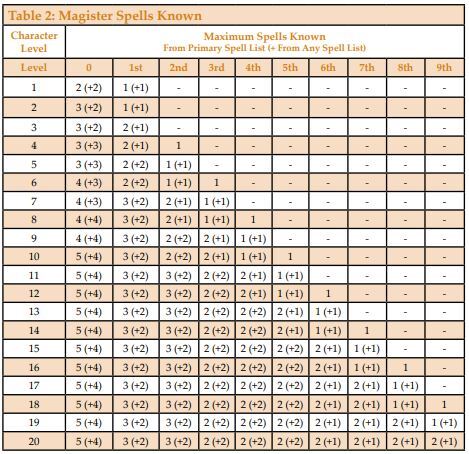 [This is the original magister Spells Known table. In our revision, it would note that the numbers are “From primary Spell List (+spells from any spell list using an associated sources of magic)”]
[This is the original magister Spells Known table. In our revision, it would note that the numbers are “From primary Spell List (+spells from any spell list using an associated sources of magic)”]Spells and Magic Items
For purposes of using magic items and meeting prerequisites, a magister’s spell list is considered to include all spells from her primary spell list, plus any other spell that the magister currently knows. Thus, a magister can use a wand of magic missiles freely if she has taken the sorcerer/wizard spell list as her primary spell list or if she has a different primary spell list but has selected magic missile as a spell known. Otherwise, she must make a Use Magic Device check to use the wand.
Chaotic, Evil, Good, and Lawful Spells
A magister can’t cast or choose to know spells of an alignment opposed to her own (even if they are arcane or occult spells). Spells associated with particular alignments are indicated by the chaotic, evil, good, and lawful descriptors in their spell descriptions.
Cantrips/Orisons
Magisters learn a number of cantrips and orisons, or 0-level spells, as noted on “Table 2: Magister Spells Known”. These spells are cast like any other spell, but they do not consume any slots and may be used again.
Want More Professional Pathfinder 1st Edition?!
Hey folks! I know there’s less-and-less material being produced for Pathfinder 1st edition by people who worked on the game as Paizo developers. If you want to encourage me to keep creating new options for this rule system, please consider joining my Patreon (or buying a cup work of support at my Ko-Fi) and letting me know!
May 9, 2022
Revised Magister for PF1 (Part 1)
Back in 2010, I wrote The Genius Guide to the Magus, which present a spellcasting class for the 1st edition Pathfinder Roleplaying Game that could draw spells (and abilities) from both an arcane class and a divine class. The idea was to make something like the mystic theurge, but balanced to have access to two spell lists at 1st level. When Pathfinder Ultimate Magic came out, with an official (and very different) class titles the magus, I rewrote the book to be the Genius Guide to the Magister. You can still buy this revised version of it at either link provided (though I make more money on sales from the first link to the OGS  ).
).
Of course, a LOT of PF1 material has come out since 2010, and the magister could use a revision to its revision. For one thing, I’d like it to be able to take any 2 of 3 spellcasting sources (arcane, divine, or arcane), and still be, you know, balanced. It could also use some expanded class options.
So, without covering all the fluff and old design notes, let’s look at what it would take to update this popular, well-reviewed 3pp class. The class progression table from the original product is included below so folks can follow along, but I’ll do a new one if the redesign calls for it. Let’s start with some basic stuff, like HP, skills, and proficiencies.
Alignment: A magister may be of any alignment. If a magister worships a deity, her alignment must be within one step of her deity’s along either the law/chaos axis or the good/evil axis.
Hit Die: d6
Starting Wealth: At 1st level a magister begins play with 4d4 x 10 gp.
Class Skills: The magister’s class skills are Appraise (Int), Bluff (Cha), Craft (Int), Fly (Dex), Knowledge (arcana)(Int), Knowledge (history)(Int), Knowledge (local)(Int), Knowledge (planes) (Int), Knowledge (religion)(Int), Perform (oratory)(Cha), Perform (sing)(Cha), Profession (Wis), Spellcraft (Int), and Use Magic Device (Cha).
Skill Ranks per Level: 4 + Int modifier
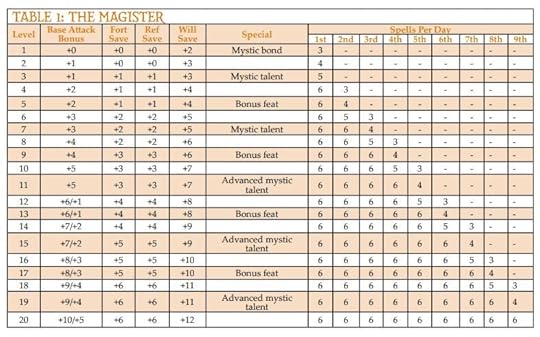
Weapon and Armor Proficiency
Mastering two sources of magic leaves little time for weapon training—a magister is proficient with only the club, dagger, light crossbow, and quarterstaff. A magister is also proficient with light armor, but not with any shields.
A magister who casts arcane spells can, as a result of her mix of two magical power sources, cast arcane class spells while wearing light armor without incurring the normal arcane spell failure chance. However, a magister wearing medium or heavy armor incurs a chance of spell failure if the spell in question has a somatic component (even if casting a spell from a divine spell list).
A multiclass magister still incurs the normal arcane spell failure chance for arcane spells she casts as another class.
Want More Professional Pathfinder 1st Edition?!
Hey folks! I know there’s less-and-less material being produced for Pathfinder 1st edition by people who worked on the game as Paizo developers. If you want to encourage me to keep creating new options for this rule system, please consider joining my Patreon (or buying a cup work of support at my Ko-Fi) and letting me know!
May 6, 2022
A Supers World Begins
I’ve had fun recently working towards an original (though obviously heavily-inspired) superhero team, the Mighty Justicier League. Originally just one of the thigns I let my mind churn up when I need to write as relaxation, therapy, or to break writer’s block, working with Jacob Blackmon on a couple of character designs (he did all the art on this page, and more) has pushed this towards actually becoming a “thing” (And he and I are working out what that will come together as.)
There’ll be more to this, but I thought it’d be nice to have everything I have now in one place. So, this is a rundown of what I have said about these heroes, and the 80 years of comics I’m pretending they have behind them.
HUNTSMAN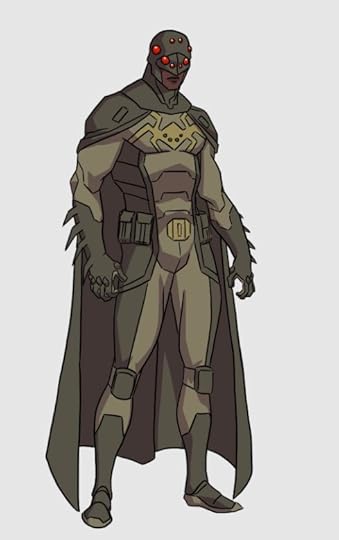
As a child, Huntsman’s billionaire family explored a “lost” hidden culture. Their inept trespassing got them killed from bites of local huntsman spiders. Huntsman was saved local doctor saved him with an experimental antivenin, giving him spider powers.
Huntsman dedicated his life to making up for the damage his parents had done, and turned over 99% of his fortune to charitable foundations. He trained through childhood to become a well-equipped costumed hero, to tackle threats beyond the reach of the law.
Some of Huntsman’s major villains (sometimes called “Huntsman’s Nemesis League”) include:
Grimaldi Goblin: Fell-into-acid-vat sadist genius with “Grimaldi’s Grin” gas bombs and a jetpack.
Manhunt: A clone of Manhunter, wants to destroy him, regain his fortune, and live in luxury at any cost.
Also: Aunt Asylum, The Black Bat, Clayman, Crimespree, Doc Croc, Doctor Zodiac, Gecko, Doctor Hugo Fate, Lady Passerine, Pallas Cat, Riddle Master, Spider Wasp, Swordfish, The Toadie, Tarantula Hawk, Tomb-Face, Two-Step, Weaver, The Web of Spies, Autarch, Doctor Syn, Feathertop, Harpy Eagle, Hodmedod, Jimmy Da Ooze, Mega-Fauna, Obtshak Council, The Parafoiler, The Punster, Rokkaku, River Monitor, Saint Assassin, Shock Jock, Skunk Ape, Queen Gale, and the Ultra-Nationalist.
That said the “Classic” Awful Eight group that are comprised of Huntsman’s Nemesis League is Clayman, Doc Croc, Green Ghoul, Grimaldi Goblin, Manhunt, Pallas Cat, Spider Wasp, and Tarantula Hawk (Lady Passerine has been a member, but she’s better when she’s running her own group.)
I still love the classic Huntsman storylines.
The Hunt: Year One
The Awful Eight
How Green My Ghoul
Siege at Sedgefield Sanatorium
Huntsman — Hunted!
Duty of the Family
Arachnarok
Cat, Spider, Wasp
SpyWeb Wars
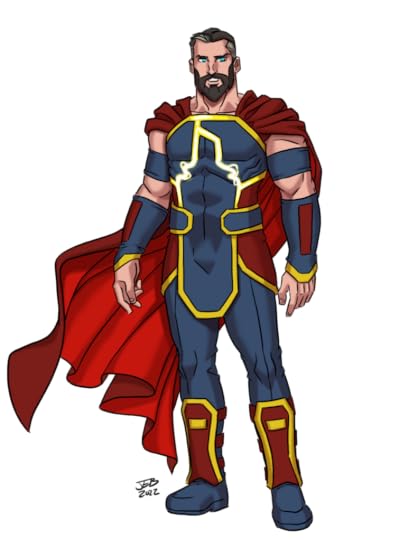
And, lo, then did come Ragnarök, but Thor and Sif defied the wyrds that declared all Aisir would die, and placed their son Vænn in a ship made of wood of Yggdrasil, and sailed him to Midgard, though a babe, that he might survive Asgard’s destruction. In Midgard’s he came to the farmer family Morven, who raised him honorable and true. Powerful beyond mortals, he became the hero Stormhammer, the rune Úr on his chest to mark his name, Vænn, meaning Hope. Only shards of shattered Mjolnir weaken him.
My favorite classic #Stormhammer villains are:
Trillionaire genius Dexter Duncan
Berzerko, the Antihero of Ragnarok
Járngreipnoid the Iron Warrior (powered by a sliver of Mjolnir)
Lord Sunstorm of the Elder Gods
Helalok, the Last Vanir
Seidhriac the Machine Shaman (who wishes to absorb all Norse magic)
Ms. Ratatoskr, denizen of the Wyrd Dimension,
Nidhogg the Magic-Eater
Ægishjálmur, the Giant Emperor
I’m NOT a fan of The Eschatologist, and it was B.S. to create a new villain for the “Death of Stormhammer” storyline.
But I *love* the “Storm On A Farm!” story where we discover Tanngrisnir came on Vænn’s ship as a cute kid, moved into the Morven farm, and no one knew he was Asgardian for 20 years because no one ever shot lasers at a small Wisconsin farm! The “Goat of Thunder!” stories rocked!
I still love these classic #Stormhammer storylines:
Last Son of Asgard
Mjolnirite Nevermore
Will of Iron
Storm on a Farm
Only Human
The Saga of the Stellar Seven
The Herokiller
Valhalla Comes
Also, “Gardenbound World of Álfheim,” where we discover a tiny acorn of Yggdrasill survived, and when Stormhammer saves it, it turns out to be growing into a new World oak, but it’s currently tiny, and it has a single one of the old Nine Realms in it, but currently also super-tiny.
And, especially, the classic Rainbow Bridge saga, when Stormhammer had to confront his own death and rebirth in order to understand that the loss of his powers was due to his fear of what mortality and resurrection meant. (h/t to Jim Milligan)
WORLD”S MIGHTIEST HEROESAnd, of COURSE, the first #Stormhammer and #Huntsman teamup, “World’s Mightiest Heroes,” which is often seen as a prequel to the formation of the #MightyJusticierLeague
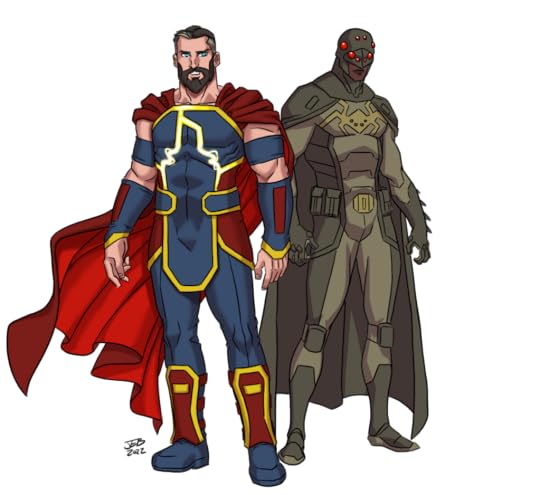
Patreon
I have a Patreon. It helps me carve out the time needed to create these blog posts, and is a great way to let me know what kind of content you enjoy. If you’d like to see more Movie Pitches, or Pathfidner 1st edition, Starfinder, or ShadowFinder content (or more rules for other game systems, fiction, game industry essays, game design articles, worldbuilding tips, whatever!), try joining for just a few bucks and month and letting me know!
If you prefer, you can drop a cup of support in my Ko-Fi. It’s like buying me a cup of coffee, but more convenient!
May 5, 2022
#MoviePitch: The Vampire (A Universal Monster Shared Universe Concept)
How do you get a Universal Pictures Monsters shared universe off the ground? By focusing on making one awesome story that stands on its own, but does so in a way that picks up threats from the most popular such movies in recent memory, is inclusive and modernized, and hints at a larger world without taking time away from the things important to your first film. Here’s my pitch:
It is 1950. In communist Romania, Alex O’Connell (early30s white, British, he/him) manages to gain permission for an archaeological team to catalog and record items being removed from an ancient abbey in the Carpathian Mountains prior to its demolition as part of a plan to build a massive road to access the Transylvanian Plain. The Romanian official warns Alex he is only doing this as a favor to Alex’s parents, who were allies during the War and in the troubled years afterward.
Alex brings the good news to Jonsey Johnson (early 30s, black, French/American dual citizen with links to Paris and Harlem), the head of expedition security, and Doctor Mary Jessica Van Helsing (early 30s, white, Dutch, she/her), the expedition’s leader. The three talk about the archaeological value of such a mission, as well as the political and regional dangers, and all three hint their parents raised them to be… cautious. Alex has a cat. Jonsey has a German shepherd. Mary has a fancy white rat. The three animals get along surprisingly well.
Meanwhile at the abbey, looters are holding local workers at gunpoint, forcing them to use their digging tools to break through the back of the abbey’s basement wall. The looters have an old map that claims the “Eyes of the Dragon” have been locked away in a secret chamber. The looters think these are gems.
But the Eyes of the Dragon actually refers to Dracula, who leaks out of a tomb under the Abby in a mist form when the wall is cracked, and one by one turns the looters and workers into his ghoul minions. Only one manages to flee out of the abbey, into the sunlight.
Alex, Jonsey, and Mary (and their expedition) reach the base camp at one end of the Carpathian pass, but find it abandoned. Both become very suspicious, and eventually find the survivor, who explains what he saw. Alex asks if there were hieroglyphics, or Chinese or Aztec symbols. Confused, the worker says no. Jonsey asks if there were vials, chemical agents, or signs of drugmaking. More confused, the worker says no. Mary asks if there were signs of dragons and inverted crosses. The survivor says there were… maybe. He wasn’t paying much attention.
The expedition decides to send the laborer back to the big city with half the expedition’s Romanian guards, to report the attack to the government. Alex, Joney, and Mary all three slip him letters to send to their respective parents, each without the others knowing.
That night, the base camp is attacked by ghouls. The main character’s pets all send up warnings, allowing Alex, Jonsey, and Mary to gear up with their respective monster hunting equipment. (Alex’s are in the false bottom of a steamer trunk. Jonsey’s are stashed in muscial instrument cases. Mary’s are secreted away in a hidden drawer of her traveling work desk.) During the fight, they run into each other, and realize they all have anti-monster experience.
Mary: “You’ve fought vampires before?”
Alex: “Vampires? Those are real?! No, mummies. Mostly, And one dragon.”
Jonsey: “Mummies are real? I’ve fought vampires and a dragons, yeah. Never a mummy.”
Mary: “Dragons? Like, fire-breathing flying lizards? Those are real?!”
Curious as to how his ghoul’s attack was repulsed, Dracula visits the camp the next day. He asks one of their team-members if he can enter the camp, and is told yes, causing Dracula to give a big smile. He goes up to Alex, Jonsey, and Mary, and asks if they were the ones to treat his pets so harshly the night before. Alex begins to draw down on Dracula, but Jonsey stops him, asking the vampire if he was invited into the camp. He affirms he was, and Jonsey rolls her eyes. Mary then tells Alex a vampire can’t attack them while he is their guest, and if he is attacked they’ll be cursed.
Alex notes he thought vampires couldn’t move about in daylight. Dracula asks where he got that idea, and Mary confirms it’s true for some vampires, but not Carpathians. Jonseynotes it doesn;t apply to a lot of Non-western bloodsuckers.
Dracula says he is unsurprised they were able to send his servants fleeing, because Alex reminds him of his most beloved servant and general. Almost as if the spirit of Dracula’s dear friend was reincarnated in Alex.
Mary asks Alex if he could be a reincarnation of Dracula’s beloved friend. Alex shrugs, and says it runs in the family. Jonsey, meanwhile, tells Mary she quits, and walks away. Alex is flustered Jonsey would quit NOW, but Jonsey points out her name is on the papers the Romainian government signed too, so she can set up her own camp if she wants to. Mary tells him not to worry, she trusts Jonsey.
Dracula suggests Alex leave the expedition and join him. Jonsey is seen getting people to take down her tent, and draws a line in the dirt, loudly telling Alex and Mary that anything on her side of the line is now HER camp, and screw them. Dracula seems amused, and begins to talk about how hard help is to get these days, when Mary distracts him by noting Dracula still has some scars from where he was injured last century, and wonders how long it took him to heal from that near-death. He is angered and suspicious, and asks her how she knows about his last conflict. She tells him her family name, and he looses some of his cool and nearly attacks her.
In the background, Jonsey has gotten all the expedition members to set her tent BACK up. Alex asks if she is leaving, or not, and she tells him if he has a question for her, he can come over where she is and ask her. Alex has his father’s confused-and-annoyed expression, but Mary grabs his arm and hauls him across the line Jonsey drew in the dirt. All the remaining expedition workers are around Jonsey’s tent. Dracula goes to follow, but stops up short at the line, as if hitting a barrier.
Jonsey says she didn’t invite him into HER camp. Alex grins, and he and Jonsey and Mary unload at Dracula, who is taken by surprise and flees.
The plot can proceed from there along pretty typical adventure/horror lines — Alex, Jonsey, and Mary decide Dracula is growing stronger by the day, and they can’t wait to stop him, so they go after him in the tomb complex. The three have different and complimentary skills, and make a good team. They hunt down Dracula and seem to destroy him, but when he “dies,” a gem that looks like a snake eye falls to the ground. Mary realizes this is one of the two legendary Eyes of the Dragon, relic of the Order of Dracul, and it’s how Dracula survived her grandfather’s assault in the late 1800s. Alex smashes it, and asks how many such gems there are. Mary says two, and three agree they need to find and destroy the other one.
Searching through in notes found in the camp of the Looters who released Dracula, they find that there were two places the Looters thought the Eyes of the Dragon might be. One was here. The other was Castle Frankenstein, and there is a map to a Lost Lab of Frankenstein’s, which might hold the secret location of his original Castle.
End movie.
Castle Frankenstein then becomes the next movie. In that story, Alex, Jonsey, and Mary seek to find Castle Frankenstein, but find they are competing with a man who can become invisible, who apparently is part of an evil occult organization…. and a little mad. During the source of that movie, it’s revealed some of Doctor Frankenstein’s reagents for creating life came from a lost Black Lagoon, and Frankenstein had sent Igor on an expedition there to gather more materials just days before the villagers stormed his castle, which is why Igor wasn’t around when that happened. There’s no note saying if Igor ever came back…
As the Shared Universe expands, I can get Wolfman, the Phantom of the Opera, and even the Hunchback into this if the first few are successful. The original characters from The Mummy (1999) as occasional support characters. Like, if the Invisible Man’s formula turns out to need blood of an ifrit of the djinn, who are naturally invisible, one of the movies can include a backup appearance by Oded Fehr as Ardeth Bay. And, of course, we can bring in elements from Mary and (rightholders willing) Jonsey’s families as well.
Both heroes and villains expand their plans, form allies, and build toward the end of the first story arc, a final showdown with Dracula, Frankenstein’s Monster, and the Woflman. But even that is only the FIRST story arc…
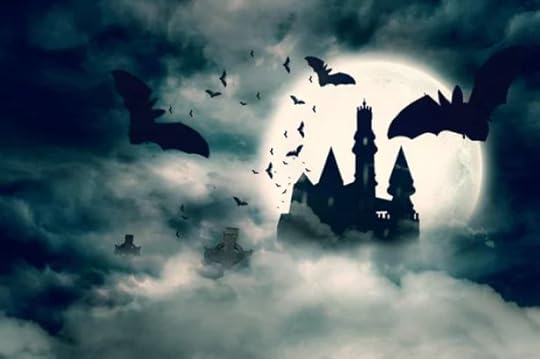 (Art by WavebreakmediaMicro)
(Art by WavebreakmediaMicro)Patreon
I have a Patreon. It helps me carve out the time needed to create these blog posts, and is a great way to let me know what kind of content you enjoy. If you’d like to see more Movie Pitches, or Pathfidner 1st edition, Starfinder, or ShadowFinder content (or more rules for other game systems, fiction, game industry essays, game design articles, worldbuilding tips, whatever!), try joining for just a few bucks and month and letting me know!
If you prefer, you can drop a cup of support in my Ko-Fi. It’s like buying me a cup of coffee, but more convenient!
May 4, 2022
Excerpt from “The Chromatic Books of Horrors & Heroes,” the Indigo Notebook, by Ben-Derek Hayes (Ages 14-17)
Excerpts from another of the “Chromatic Books of Horrors & Heroes” by Ben-Derek Hayes. This one is exclusively “Worstiary” entries (“Like a Bestiary, but the monsters are even worse!”), and indeed is exclusively creatures created through “Menagermancy,” which appears to be a lost school of magic practiced by the Nightfall Empires and People From Before the First Dawn. Also unlike the majority of the Chromatic Books of Horrors & Heroes, there is a range of ages listed on this one. Many entries have a cruder drawing that seems to be their original illustration, and then more photo-mash-up looking examples pasted in later “for art reference” when the “publishers come knocking.”
So, adapting the original sketches and later art-references of the hybrid creatures found in the Commonlands* calls for a different art style than previously used. For this task, the art of Marinavorona has been used in this article. While there are dozens of hybrid creatures in the Indigo Book, I have selected three that I particularly enjoy for this excerpt.
*Apparently, according to a note I found with the Arktos entry, the Commonlands are “Those lands held “in common” by the original city-states of the Dwarven, Elven, Human Alliance [“Dehallia”]. While those City-states have mostly expanded into kingdoms [or collapsed], the Commonlands are not allowed to have any government bigger than a single city and what can be hit by a bowshot from its walls. This is supposed to ensure freedom of people in the Commonlands from invasion or conquest by foreign cultures, but in practice actually means the various Dehallia kingdoms are constantly fighting and maneuvering and scheming to gain more control over the various smaller governments, and their alliances and factions which try to bypass the government-size restrictions. This vicious and constant backbiting, ignoring of other more serious threats, and constant digging into older layers and accidentally unleashing things is why the vocation of “Adventurer” is considered normal within the Commonlands, despite being almost unknown elsewhere.”
ArktosThe Arktos is the Beast of the North, also known as the Ursapard, Winter Warden and King of the Midnight Sun. An Arktos has the head and antlers of a caribou, body of a polar bear, and tail of a snow leopard. They are extremely intelligent, but have utterly un-humanoid interests and concerns. They can live for centuries, some learn druidic magic, and they are extremely territorial.
 (Arktos)
(Arktos)An Arktos thinks nothing of eating other thinking creatures, and is not offended when other creatures try to eat it. What they do mind is anything that makes major changes to what they consider their territory. However, packs of Arktos sometimes prowl over a circuit that takes 10-20 years to complete. When Commonlands settlements expand hunting, logging, or even building further north, sometimes they discover years after doing so the area is considered claimed by an Arktos pack, which is merciless in driving out what it sees as “invaders.”
Some older Arktos grow black lichen on their horns. They are shunned by others of their kind, sometimes practice necromancy, and usually end up going on killing sprees southward until put down.
The Klaken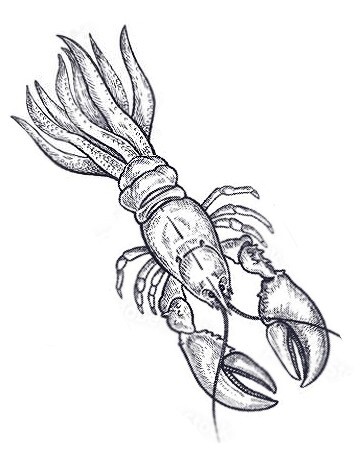 (The Klaken)
(The Klaken)The Klaken has the forebody of a lobster, but a series of tentacles instead of a tail. The Klaken prefer to eat seafood that comes from a hard shell, for unknown reasons, causing them to attack other shellfish, the armored WhaleGods… and ships. A Klaken can eat x5 its body weight in a day, but can also go for years in a form of torpor when food is more scarce, waking during storms to see what has been churned up by the thunder and rough seas.
Unlike most creatures that top out at Apocalypse -tier, the Klaken can grow to Kaiju and even Daikaiju tiers. Indeed, Klaken continue to grow in both size and intelligence as they age, with many Dusk Kingdoms have rules about how big a Klaken you can eat (though the Dehallia have no such restrictions), with a length of 118-157 inches being typical cutoff points.
MagnificatThe species commonly known as Magnifcats are technically “peafelines,” brightly-colored felines with the wings, talons, and tail plumage of peafowls. Magnificats come in a range of colors, and unlike peafowls feather patterns can be bland or bold regardless of gender. White, cream, and calico Magnificats are most often female, and males are much more likely to be almost exclusively red, orange, gold, black, or azure in color, with multicolor male cats rarer.
The talons of the Magnificat are deceptively long and dangerous. When “retracted” the tips remain visible (though canted upwards, allowing the peafeline to softly push with its paws without causing injury. However, the claws can still “extend” from that position, making them x3 to x4 larger than those of a typical cat of the same size. They are also of much stronger material than most animals, and Magnificats do claw damage as if they were two size categories larger than their true size.
Magnficats are on the same intelligence and power scale as pseudodragons, imps, and quasits. rather than the powers of those creatures, Magnificats can use their tail-display to dazzle, confuse, stagger, or even blind and stun. They make amazing familiar, but rather than being selected by a spellcaster, a Magnificat forges a familiar bond with whoever it wants to, weather mage or not, and with no warning. Some families host colonies of Magnificats at their homes or lands in the hopes their children will be so familiarized. When asked why they bother, most Magnificats just claim they like having someone nearby who has thumbs.
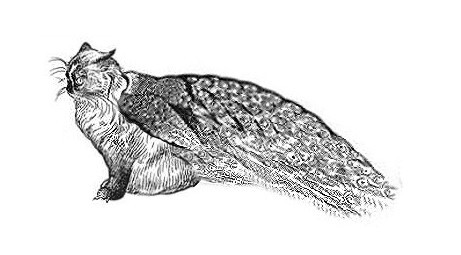 (Peafeline, aka “Magnificat”)Chromatic Books of Horrors & Heroes Index
(Peafeline, aka “Magnificat”)Chromatic Books of Horrors & Heroes IndexAs I translate and post more excerpts from these amazing analects of creativity, I’ll post the links to the end of the first Horrors & Heroes post, so serve as an Index for all the Horrors & Heroes content.
PatreonObviously this kind of undertaking requires resources! If you wish to support me in developing “The Chromatic Books of Horrors & Heroes,” please join my Patreon, or drop a cup of support in my Ko-Fi.
May 3, 2022
Excerpt from “The Chromatic Books of Horrors & Heroes,” the Caput Mortuum Notebook, by Ben-Derek Hayes (Age 16)
Excerpts from another of the “Chromatic Books of Horrors & Heroes” by Ben-Derek Hayes. This one is from a few years later in Hayes’ career, and it’s clear from both the use of “caput mortuum” to describe a purple-brown spiral notebook color, and the periodic notes in margins about Greek architecture, the Roman Empire, the “missing Sea Peoples,” and pop quiz dates that out author wrote much of this while taking ancient history and Humanities courses in public school. As before, the art of Zdenek Sasek attempts to capture the essence of Hayes’ art sketches, which show real improvement since his earliest notebooks.
While the idea of wargates and other “typical” categories of trapped items is fascinating, I actually chose to showcase this excerpt because of the worldbuilding hinted at, with multi-species empires fighting and collapsing, apparent categories of societies based on how “new in the day” they are, and some shade thrown at classic “fantasy good guy” lands rules by dwarves, elves, and humans. I hope to find more information on these topics as I go through the notebooks, but it looks like it is scattered throughout the last few years of notebooks, and may take considerable compiling and revising before a clear picture of this fantasy world (which, if it has a name, I have not found yet) becomes clear.
Even so, the deep mix of the familiar, the gonzo, and the unexpectedly reasonable in this excerpt reminds me of my earliest days as a GM, and takes my breath away.
WARDGATESWardgates are one of the Seven Typically Trapped Things -7TTT- along with chests, forbiddings, holdouts, panopticons, necropolises, and sarcophagi. As long as appropriate knowledge/lore checks or recon reveals something to be one of the 7TTT, characters automatically get to search for traps without the player having to say so. If something isn’t a 7TTT, and is trapped (THIS IS RARE – NO MORE THAN ONCE PER STORY ARC) you still get such automatic checks but at -5 (unless you have a power to allow you to always be trapfinding), in which case you do not. Players never need to (or get to) slow down the game by asking if things are trapped, but also never get penalized for not thinking to ask if every single thing is trapped — all trapchecking rolls are called for by the GM, though research and study of an area in advance can grant checks to know if there are 7TTT or Rare Other Traps present.
Wardgates originated with Gaub-Algen Empire, before it’s destruction at the hands of the Dwarf/Elf/Human Alliance (or Dehallia) [which created the Dehallia prejudice against all Gaub-Algen, or “goblins” including orcs, goblins, hobgoblins, bugbears, ogres, giants*, trolls, knuckies (the mammalian of the two races both wrongly called “kobolds” by Dehallian sources), draugh (or “dark elves” which can be any color but have much longer ears making them “obviously” degenerate and inferior to High Elf/Wood Elf standards)], and like many things Gaub-Algenian has been adopted by most of the Dawn Kingdoms, and no small number of Noon Kingdoms and even a few Dusk Empires.
*Technically not the Fomorians — athatch, cyclops, ettins, and firbolgs, who were part of the Giganarchy which opposed and was destroyed by Gaub-Algen prior to the DEH Alliance taking down the Empire — nor the Nephilim — oni, rakshasa, titans, and other part-angelic creatures, who are still quite in power to the Far West in Muthuul-Danleib and only some of which come far enough east to hit the Commonlands and run into adventurers. But most Dehallia sources don’t bother to differentiate between types of giants.
Wardgates were used as large, impressive entrances to important places. They would often be open and safe, but could be both locked, and locked as “armed” (meaning the trap is set to go off). The function of a wardgate is multifold. First, it is a symbol of power — look, see, we have entrances that can defend themselves! Second, when locked and activated it serves as an unmanned line of defense — likely not enough to stop a rampaging beetlephant or pyrosaurus rex, but something that hurts them, may drive off less sapient monsters, and delays or slows them while the guard/army/magic missile-only brigade prepares a defense in-depth. Third it can be a crowd control deterrent — no one wants to riot in Upper Silverholt because the Royal Elven Wardgate might be closed, making it difficult for anyone to get home. Fourth, they can be tested in the name of local defense, but thus showing off how advanced your kingdom’s flaming poisoned caltrop launchers have become as a form of international saber-rattling.
Since most of those functions require people to know a wardgate is a wardgate, they tend to be big, conspicuous, and obviously something more than just a hole in their connected wall. Of course, wargates from different cultures are marked differently, so especially when dealing with Dusk or Nightfall Kingdoms, cultural/historical knowledge/lore is helpful when identifying them. Even so, if when crawling through an Nightfall Ruin, if an archway has a fanged face worked into its keystone, and that turns out to be a wardgate, it’s easy enough to treat all future portals with fanged-face-keystones as potentially trapped.
Some typical wardgate traps:
INSTANT ROCKFALL: Crude, yet effective, the instant rockfall is built so a defender inside the attached wall (or a watchtower for slightly more advanced versions) can hammer loose a brake, dropping a weighted chain down a shaft, causing the chain to pull free lynchpins within the wardgate, so it collapses. This is a one-use wardgate that literally requires it to be rebuilt after each use, so they are almost always only observer-triggered. Thus difficult to disarm. In ruins an instant rockfall is only dangerous because the lynchpins may be rusted or missing, thus a strong shock (like a fireball) can cause it to collapse more easily than surrounding ruined sections.
HELLGATE: A hellgate is a form of iron portcullis made of hollow, perforated metal with spaces at the bottom for Greek fire. Arming it requires placing the Greek fire in the slots, and then if it is dropped (rather than slowly lowered) the Greek fire vials break, the hollow grille works as a chimeny, and the whole gate and an area around it bursts into fire. More advanced hellgates may also have ways to add agents through the hollow grille from above, ranging from oil (to keep the fires going), smoking/tear gas agents, and even fire-elemental-summoning-stones.
 (Hellgate)
(Hellgate)SPIN SCYTHECLE: A spin scythecle has blades on spinning wheels mounted low that can rotate out and cut everyone off at the knee. The gearworks are generally driven by weights on chains, and thus have limited runtimes, but more advanced versions can be powered by waterwheels, or have backuphampster-wheel power to extend runtime once activated.
WALLCRUSHER: The wardgate is a short corridor, and the sides are under pressure, often from counterbalanced gears and shafts. When closed, it is armed by the door being broken. Once armed, any pressure on the center of the corridor released the spiked walls. After the walls crush, they form two new narrower hallways, allowing counterattacks to be launched. Damage, area, escape difficulty all scale with level. Setting it off when disarming tends not to damage trapwright, but it’s loud as heck.
 (Wallcrusher)Chromatic Books of Horrors & Heroes Index
(Wallcrusher)Chromatic Books of Horrors & Heroes IndexAs I translate and post more excerpts from these amazing analects of creativity, I’ll post the links to the end of the first Horrors & Heroes post, so serve as an Index for all the Horrors & Heroes content.
PatreonObviously this kind of undertaking requires resources! If you wish to support me in developing “The Chromatic Books of Horrors & Heroes,” please join my Patreon, or drop a cup of support in my Ko-Fi.
May 2, 2022
Excerpt from “The Chromatic Books of Horrors & Heroes,” the Brown Notebook, by Ben-Derek Hayes (Age 12)
From time to time there come into my possession works by gamers who, for whatever reason, have not previously received the level of exposure and appreciation they deserve. Such is the case in the “Chromatic Books of Horrors & Heroes” by Ben-Derek Hays. These notebooks were sent to me mysteriously and anonymously, with no known provenance, but clear instructions for me to make what I could of them and legal papers freeing me from my normal concern for looking at unsolicited submissions. All effort to find the original author have, as thus, failed.
Somewhat chaotic as a first draft, these notebooks of varying size and composition range over a number of years and are color-coded in a system I have yet to fully grasp. But there is no doubt that mixed in with the raw exuberance and untested systems, there are sparks of true genius in these books. As they sit in my care now I shall, as editor and chronicler tasked with compiling these disparate nuggets of raw creativity into some cogent, playable form, from time to time offer excerpts of partially-developed material taken from one or more of the notebooks. A each is color coded and marked with the age of the author (though it is unclear if this is the age when a notebook is begun, or when it is finished, or some other relevant date), I’ll include such information in these entries when I can.
This is very much a work-in-progress, as development is going to be a lengthy process undertaken in stages. For example, for the moment I am correcting spelling and doing my best to ensure sentences are complete and can be parsed, but am otherwise not altering the content of the entries I am previewing here. Similarly, Ben-Derek Hayes (Age 12) provided many illustrations in the Brown Notebook, which are clearly intended as just sketch stages (with notes such as “draw better,” “Pay real artist to make this ozsome,” and “get gud” scrawled next to many), but at the same time I feel the general style used for each picture carries important content and tone. While the illustrations in this article are all by Zdenek Sasek, I have endeavored to ensure they capture the spirit of the original sketches as closely as possible
The material presented today is not only all from The Brown Notebook (Age 12), the selected entries are all marked as being from a theoretical “Worstiary” (which, it is noted in a few entries, is “Like a Bestiary, but the things in it are Worse”). I’m not yet sure if the Worstiary is a separate notebook, from which some data was copied, or if the intent was to someday compile the monsters from the Brown Notebook into a formal Horrors & Heroes Worstiary. Indeed, it’s not clear to me if Horrors & Heroes was intended as a stand-alone game system, a supplement for some specific game (or chimera of multiple similar game systems), or a truly audacious attempt to create a supplement that works with any ttRPG.
But those organizational concerns are by burden to bear. You may simply sit back, and bask in the unfettered imagination of Ben-Derek Hayes (Age 12).
Your humble editor and appointed Horrors & Heroes developer, Owen K.C. Stephens
Man of Arms (Man of Arms)
(Man of Arms)A Man of Arms is a zombie thing made of nothing but people arms stitched together. It has no head, but it’s body, legs, and arms are made of lots of different arms. It can move as fast when prone as when standing by doing that creepy stop-motion-skittering thing from cable horror movies.
Other than being undead, a man of arms is just 1d4+1 humanoid monsters that only move once a round, but get to make attacks and do other things as often as that many people would. So a Man of Arms made of 3 people moves once, but has initiative and actions for 3 people. All damage goes to the people making it up one at a time, and when you kill one, you’ve hacked off that many arms (so it attacks less and stuff). With no heads they can’t hear or see things and are immune to gazes and songs, but still fight good (but maybe not any ranged attacks since that would be dumb).
Any treasure a Man of Arms has should be a cool weapon some Hero can use.
Scare Bear (Scare Bear)
(Scare Bear)A scare bear is like a normal bear (or a Dire, Fel, or Apocalypse Bear for higher-level fights), but it has the Direful Howl. Whenever the scare bear sees things but doesn’t attack for a round, or anytime it takes damage or fails a save against an effect, it howls (not an action, just happens). All creatures within 6561.68 feet must save against fear or be more frightened than they were before. You can only be less frightened by running away from the scare bear for a round, killing it, or successfully saying something witty about fear or bears (must roll as high as the scare bear’s Direful Howl save). Which means Scare Bears can understand any language, I guess, so they’re magic too.
Scare bears are big and shaggy, and their eyes glow scary colors, which means even if they use Stealth you know there’s something with glowing eyes in their space.
Scare bears were created through Menagermancy by Udek-Kai the Unliked. One of the People From Before the First Dawn, Udek-Kai grew the Gardens of All Feeling, and made Scare Bears to scare off thieves and kids and crows and stuff. The Gardens of All Feeling also were home to the Fel Scorpionbees, who are immune to fear and make the Eternal Honey, so Scare Bears never got hungry or aged. When the Gardens were burned in the First Day War, the scare bears scattered and changed. They are still drawn to the few remaining Feeling Plants, especially Orchids of Sadness, Roses of Love, and the tiny, delicate Clover of Wondering if Someone Likes You.
Marginal IdeasLiterally ideas written in the margins of the notebook. Some of these may have longer writeups or sketches in later notebooks, which would supersede these short descriptions.
Eye Bug: An eye bug is a big round beetle that crawls into your face when you are sleeping, and eats one of your eyes without you feeling it. To make sure you don’t dig it out, it looks cool and gives you better vision so you can see ghosts and invisible hobbits and traps and stuff. When you cry, microscopic eye bug eggs flow away in your tears and grow up to eat other people’s eyes.
Hangman’s Kite: Sometimes when a kite gets stuck in a hangman’s tree and abandoned, it absorbs the mean from the dead people in the tree. It turns its string into a hangman’s noose, and goes flying looking for people to choke and pull up into the sky by their neck.
 (Hangman’s Kite)
(Hangman’s Kite)Web Kittens: The size of kittens, but with two tails and six spider legs (ending in kitten-paws) rather than normal kitten legs. Can make webs, but normally only do so to form their own balls to play with. Venomous, but their venom makes you love them and want to take care of them. Popular as pets, but illegal in many fortresses and valleys.
Chromatic Books of Horrors & Heroes IndexAs I translate and post more excerpts from these amazing analects of creativity, I’ll post the links to future articles here, so serve as repository for all the Horrors & Heroes content.
The Brown Notebook (Age 12) – This page! Monsters from the Worstiary.
PatreonObviously this kind of undertaking requires resources! If you wish to support me in developing “The Chromatic Books of Horrors & Heroes,” please join my Patreon, or drop a cup of support in my Ko-Fi.
April 29, 2022
Top Ten Signs You Might Be The Chosen One
Look, we’ve all been there, trying to figure out if we are the Chosen One. Maybe we’re trying to decide if learning to speak Greek backwards while swordfighting from camelback is worth the effort. Maybe we need to know if we should pull the Scepter of Rulership from the Lake of Ill-Conceived Governmental Organization.
Maybe it’s just that our tax forms want to know our occupation.
Whatever the reason, when you are trying to decide how Chosen you may be, there are the:
Top Ten Signs You Might Be The Chosen One10. You have visions of a giant mecha only you can pilot, an ancient sword only you can wield, a magic spell only you can pronounce, an alien army only you can command… or heck, all of the above.
9. You were born under unusual circumstances that sound like they could be spun into their own not-as-interesting prequel. Like, born during an eclipse on the side of a volcano at the exact moment the Queen of Graves was slain by Ashley Apocalypseblade.
8. There’s a prophecy about you. This is a huge giveaway… but also a crapshoot. first, prophecies about Chosen Ones are often kept from Chosen Ones for… reasons? Second, Chosen-One-Defining-Prophecies are notoriously vague. It’s almost like they’re written so after anyone does anything spectacular, you could back-translate the prophecy to make it sound like it meant them all along. (Weird, that.) Third, flattery and the Big Lie both being powerful, some people may tell you there’s a prophecy about you to get you to do what they want…. which could be something vile. So, you know, don’t do anything because you are maybe the Chosen one that you wouldn’t feel comfortable doing anyway.
7. Your name is *just* shy of sounding like a porn star name. Like Azure Bliss, or Bolt Vanderhuge.
6. You instinctively know mystic, alien, or dead languages no one has taught you. Aramaic is popular for this, but Njerep is just as good. However, if it’s Klingon or Tolkien elvish, you’re likely just the Geeky One. Esperanto only counts if you are on a world that is an endless river. Enochian could go either way.
5. Fey folk/spirits/sentient viruses/gods casually hang out with you in your head. And, yes, this does mean that some signs of being the Chosen One are easily mistaken for signs that you need therapy. Come to think of it, most Chosen Ones could use some therapy, so just go get some whether you turn out to be Chosen or not.
4. Your early life sucks, but only if it sucks in a way that specifically prepares you for greatness. Which you almost never realize at the time, so while this technically counts, it’s not actually very useful for analytic comparison, given how many people have early lives that suck.
3. You have a birthmark, scar, or blemish that is recognizably in the shape of something cool. Bonus points if it itches during thunderstorms, or glows when undead are nearby.
2. One of your best family friends is a powerful hero who has saved the world more than once… though you just think of her as “Aunt Apocalypseblade.”
1. Joseph Campbell keeps taking notes about your life, calling it a “journey.”
Patreon
If you found this useful or entertaining, and you’d like to support the creation of more such content, check out my Patreon!
April 28, 2022
Creative Resources Online
Today, I’m just listing some online resources I find useful, and other gamers. GMs, and creators might as well. I may expand this list as time goes on, in which case I’ll link back to it when it gets updates.
As always, I am not a lawyer. This is not legal advice. Read terms and conditions of any resource you sue for commercial products.
Gold Standard
These are the very best of their kind. The gold standard of usefulness, in my opinion.
Dictionary of Medieval Names from European Sources () – This is just what is says on the tin. The list is long, and hyperlinked to definitions, origins, and atributions.
Dyson Logos’ Commercial Maps (https://dysonlogos.blog/maps/commercial-maps/) – A huge, amazing repository of excellent maps by Dyson Logos that have free, commercial licenses attached to them. Read the license and understand it before use (i am not a lawyer, this is not legal advice), but if you need a city, tavern, dungeon, castle, and much, much more either for your game tomorrow night, or your product you want to sell without incurring cartography costs, this is an amazing place to start.
The Encyclopedia of Pulp Heroes: The Online Edition, by Jess Nevins (http://jessnevins.com/pulp/introduction.html) – Jess Nevins is a true scholar of entire forms of fiction I adore, including Victoriana, Pulp Stories, and more. This is an amazing list of pulp fiction characters, as well as important introductions, descriptions of archetypes, cross-referencing, and so on. For inspiration or a better understanding of the genre, this is an invaluable resource. (His Encyclopedia of Golden Age Heroes is nearly as good, and a valuable companion piece, but is not as finished as the pulp encyclopedia. And , of course, he has numerous published books as well, and a range of similar subjects, most of which are in my cloud reader and a few of which are on my physical bookshelves.
OneLook Dictionary Search (https://www.onelook.com/) – I don’t care about the definitions section of this. What’s amazing is the ability to enter a word and click the “related” button. That provides a list of words that are, somehow, related to the search term. Not synonyms (necessarily), but words that share some kind of link to your search word. Searching for words related to “death” gets you executioner, tomb, slaughterhouse, and so on. The utility for when I want words tied to a theme for spells, hero names, groups, magic items, archetypes, and so on is huge.
Almost as useful is the * before or after searches (such as death*), which give you words and phrases that start with or end with your search term. death*, for example gets you death’s head, death throes, and more. And, you can click through the examples to find out what they mean and/or where they come from.
There are tons of search options and ways to organize and sort the results, so spend some time reading the site and trying out options.
My Patreon and Ko-Fi
Speaking of resources, the tons of material I have on this site is supported by the members of my Patreon, and cups of donation to my Ko-Fi. So, if any of the links above open a new world of options for you, please consider supporting my current and future efforts to bring you more!
April 27, 2022
The Diary of Ardra Maias
“Of course, Doctor Frankenstein did not begin his work with human corpses. Not for ethical reasons, you understand, but simply because they were difficult to acquire, and until his work progressed to a stage where human trials were needed, there was no point.
“His earliest experiments on revivification were on marmots, easily bought from trappers near his family’s Swiss home. There were far more failures than successes, of course, and were it my preview I would condemn the man to perdition on the basis of what he did to those alone.
“Even so, in time he brought a marmot to life, indeed my current companion Vivo is that first, fully-revived marmot, though in Vivo’s case no surgery had been needed. The Doctor had killed him under exacting conditions, and revivified him moments later.
“I have often marveled at Vivo, for while he has all the robustness and vitality of all we mortiborn, unlike the majority of us he is a peaceful, caring creature. Well capable of defeating a predator ten times his mass, Vivo would prefer affection to affrontation. Bless him.
“But from there, the hubristic doctor did decide he must move to primates, if not yet humans, to perfect his procedure. No large primates being common in Italy or Switzerland, he had to order them bespoke. But hunting expeditions to Borneo were common enough, and he was rich.
“Indeed, I am unsure how many evils would never have been visited upon this world had the Frankenstein family not been one of vast resource and reputation. In the century-and-on of my existence, I have found more evils traced to rich, well-respected men than any other beast.
“So, vile Frankenstein had no difficulty having Indonesian and Malaysian orangutans captured and brought to him. It was thought perhaps he wanted a menagerie, such as at London’s Exeter Exchange. Many were sick and died after arrival, but that too suited his needs.
“I am uncertain how many of my distant cousins, living or dead, he constructed me from. Close examination of my form and logic dictates no less than seven, but without taking my internal organs apart — an act I have always objected to — an exact accounting is impossible.
“I have been told, repeatedly, by anatomists that my brain, at least, must be human, rather than native to my orangutan skull. This is argued that because I can talk, and reason, I cannot be a mere ape. Of my speech, I will grant, the doctor most likely used some human parts.
“But my reason? No, I am not convinced my reason is any less orangutan than my limbs. For, did his homo sapiens subjects not show vast, cold intellect beyond that of their flesh-donors? Is it so hard to believe that the gap from apes’ reason to mans’ is at best a short distance?
“I would propose the question cannot be truly settled until men show the ability to see themselves as something other than the divinely-appointed lords of all matter in the world, animal, mineral, gas, fluid, and plant alike, to use and despoil as they see fit.
“I remember nothing of my time before mortibirth, though instincts still exist from my firstflesh lives, and some smells and sounds strike me as familiar in the extreme. But having gone to Borneo once, I can safely say I am no native of it. I am no native of any land.
“I remember my first weeks. I thought the doctor wise and kind, something between a father and a god. He taught me to walk, talk, eat–ensured that I was fine in form and function. Then he drowned me in an arsenic solution of his own devising, and took notes as I screamed.
“I do presume he believed my consciousness fully destroyed. I think this not out of some trust in his character, but from the fact when I stopped moving, he stopped taking notes and never consulted my glass sarcophagus again. I sat, silent and unmoving, and thought. For years.
“Should I not have been found in the investigation that ensued after the publication of an account of Doctor Frankenstein’s insensate experiments, I believe I would be trapped, paralyzed, and thinking still, looking through the arsenic water and glass at some stone wall.
“But found I was and, in time, released. As I could speak, and was witness to the foul knowledge and process the doctor had created, I was not destroyed. In time, decades, truly, I earned my freedom by turning the lie of a human origin for my brain back on the government.
“So, here exists I. Corpses pretending to be one flesh. Abyssal chemical reactions pretending to be life. An ape’s mind pretending to be human.
“But I am also cunning, robust, and potent in the way of all my kind, and though I carry no love for Monsieur Dupin, he taught me well.
“By the aegis of his brusque acceptance of me, I am established. I have legal papers that sometimes grant me rights, and monies that do so more often.
“How did I come to know Dupin? What is my vocation now? Those shall be future articles, for which I’ll receive a nickel a word.”
–From the Diary of Ardra Maias, the Empire Coast Journal, Jan 17th, 1934.
(Want to support more short fiction and Diary of Ardra Maias entries?! Back my Patreon or leave a drop of support in my Ko-Fi!”)
Owen K.C. Stephens's Blog
- Owen K.C. Stephens's profile
- 7 followers



